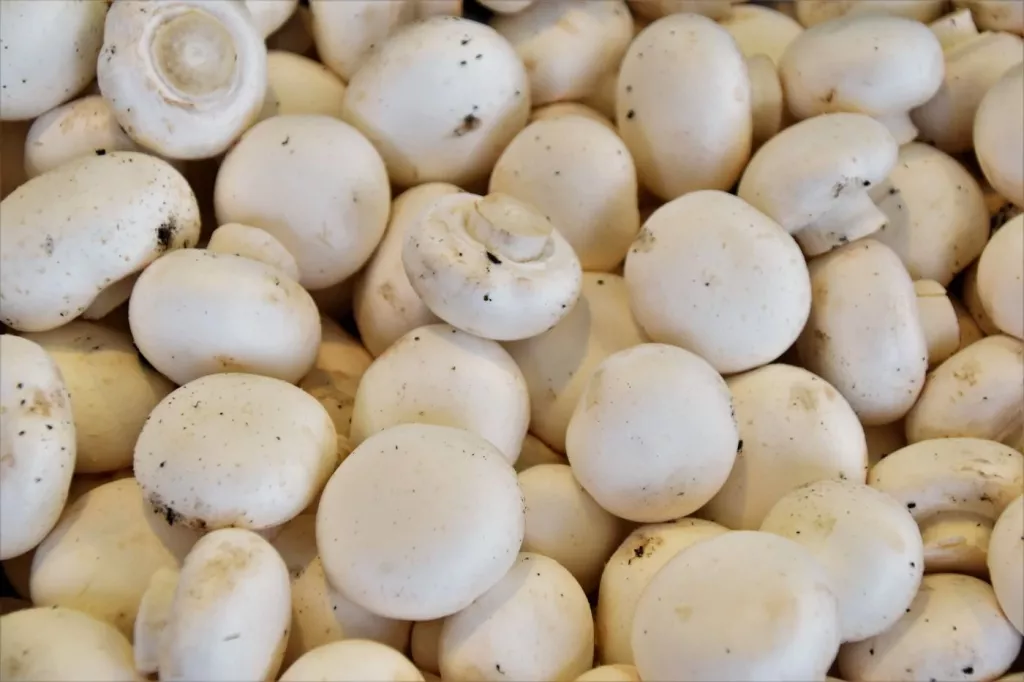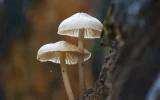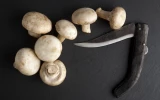Mushroom Growing Temperature & Humidity (Button, Oyster)
If you plan to succeed with mushroom farming, you must provide it with optimal growing conditions. Mushrooms grow best in warm and humid environments, but the optimal temperature and humidity level depend on the type of mushrooms you grow. In this article, we’ll look at the ideal growing temperature and humidity of two of the most sought-after mushrooms: oysters and button mushrooms.
Oyster mushrooms grow well in a temperature range of 50°F to 75°F and relative humidity of 80%. Button mushrooms thrive best at temperatures of 68°F to 82°F to induce mycelium growth. Once the mycelium has been fully formed, the temperature must be maintained at 53°F to 64°F, with a 90% relative humidity level.
While these temperature ranges are general, they can also change depending on where you are in the growth stage of your mushrooms. To help you adjust the temperature and humidity levels of your oyster or button mushrooms for the best results, keep reading below.
Summary
- Oyster mushrooms thrive in temperatures of 50°F to 75°F and a relative humidity of 80%.
- Button mushrooms have different temperature requirements for mycelium growth and the fruiting stage. For mycelium formation, a temperature of 68°F to 82°F must be maintained, while to induce fruiting, the temperature must be around 53°F to 64°F with a 90% relative humidity level.
- Oyster mushrooms are easier to grow than button mushrooms.

On this page:
Oyster Mushrooms Grow Best at 50°F to 75°F and Humidity of 80%
An acre of land can produce 1 million pounds of oyster mushrooms in a year. Selling these mushrooms can quickly escalate your income to $43,560—$130,680 per acre. This makes oyster mushrooms the most profitable vegetable you can farm on a small piece of land.
To get to these numbers, however, oyster mushrooms must be grown in optimal conditions, especially under ideal temperatures and relative humidity. Below is a table that shows the most ideal temperature, humidity level, and light intensity in each growing stage of the oyster mushroom:
| Growth Stage of Oyster mushrooms | Optimal Temperature | Humidity Level | Light Intensity |
|---|---|---|---|
| Spawn run | 75°F | 85 – 95 % | No light |
| Primordia formation (Pinning) | 50°F to 60°F | 95 – 100 % | Partial shade |
| Fruiting | 60°F to 70°F | 85 – 95 % | Partial shade |
From this table, we can say that the optimal temperature for oyster mushrooms to grow well is from 50°F to 75°F and a relative humidity range of 85 - 100%. During the spawn run, it requires complete darkness, while during stages of pinning and fruiting, partial shade will do.
Fresh air exchange should also be ensured 3 times a day for the primordia formation and fruiting stage.
Button Mushrooms Have Different Ideal Temperatures for Mycelium and Fruit Body Formation
To promote mycelium growth, adjust temperatures to 68°F to 82°F. Once the mycelium has been fully formed, the temperature can be lowered to 53°F to 64°F, with a 90% relative humidity level, to prepare for the formation of the fruiting body.
Monitor your mushrooms once a day to make sure that it’s getting enough moisture. If not, you can spray it gently with more water. Be careful not to pour water on the compost mixture as this will create wet spots which are not good for mycelium growth.
As soon as the first primordia appear, you can now remove the cover as the button mushrooms will still need fresh air to thrive. Button mushrooms can be harvested every two weeks until the mushroom substrate is exhausted after about five months.

Button mushrooms are the more common and familiar white mushrooms that we use in a wide range of dishes such as pasta and pizzas, making up 90 percent of the mushrooms consumed in the United States.
Their mild taste and meaty texture make them suitable for such dishes, plus, they’re the least expensive mushrooms. Button mushrooms are the immature form of the fungus Agaricus bisporus, characterized by their small size usually measures at least 1 to 3 inches across. They have pale white color, and a rounded shape.
If left to develop before harvesting, it can grow into what is known as cremini mushrooms, which are the mid-sized and slightly brown variety. The last stage of development, if completed, is the portobello mushroom, which is the largest and has a dark brown color.

When growing button mushrooms, farmers have an advantage during the winter season when everything outside is cold and bleak. This is because white button mushrooms don’t require sunlight to thrive. The darkness can be achieved by covering the growing containers with opaque plastic sheets, or black construction paper, or simply by keeping them in a closed cupboard.
They grow well on nitrogen-rich manure, such as horse manure. During spawning, button mushrooms prefer warm mediums. If the compost gets chilly, place it on a heating pad and bring the temperature down to at least 70°F. This is the best temperature for spawns as anything higher than this can kill the spores.
Oyster and Button Mushrooms Grow Best in Warm and Humid Environments
If you have an acre of land, one of the best decisions you can make is to use it for mushroom cultivation. Growing mushrooms even just on an acre of land can be very profitable. With careful planning and preparation, you can maximize your 1-acre land through mushroom farming.
A few easy but very important steps in starting a mushroom farm are the following:
- Selecting the right species suited to your agroclimatic conditions
- Having a well-designed irrigation system to ensure that the mushrooms receive sufficient moisture
- Regular monitoring to look for signs of diseases and infestation
- Providing the optimal conditions such as light intensity, and ideal temperature and humidity levels to grow the mushrooms successfully

Two of the most famous mushrooms being cultivated worldwide are the oyster and button mushrooms. Although the former is said to be less popular than the latter, oyster mushrooms are starting to pave their way into the market.
These mushrooms are becoming a popular dish ingredient, not just because of their savory taste, but also due to their high fiber and vitamin content. They are cholesterol free and can be a good substitute for animal protein.
Aside from this, cultivating oyster mushrooms are easier for the following reasons:
- They grow easily and can be harvested in 6 weeks.
- They are weather-tolerant and can be planted any season.
- They are prolific producers.
- They grow in a variety of media.
- They produce large fleshy mushrooms.
- They can be started with small capital but can give a high-profit return.



